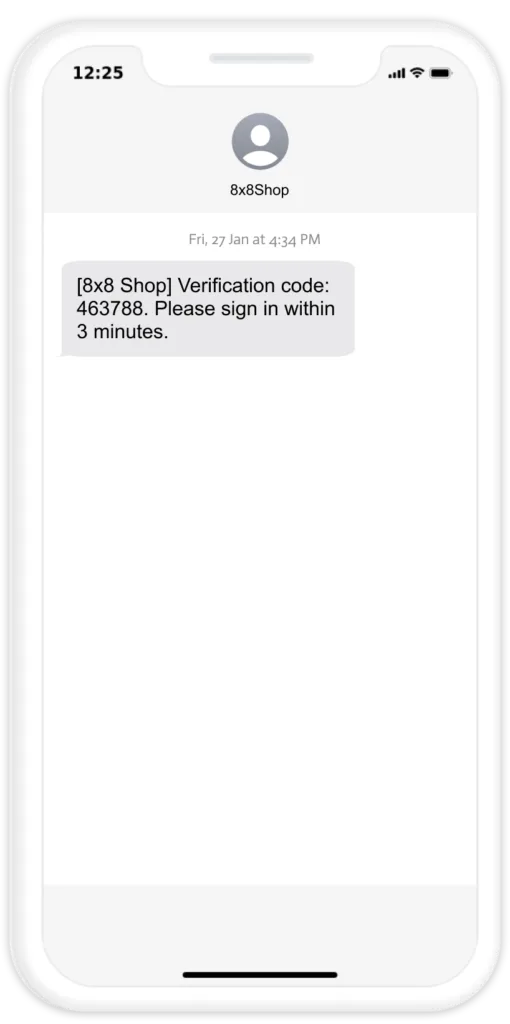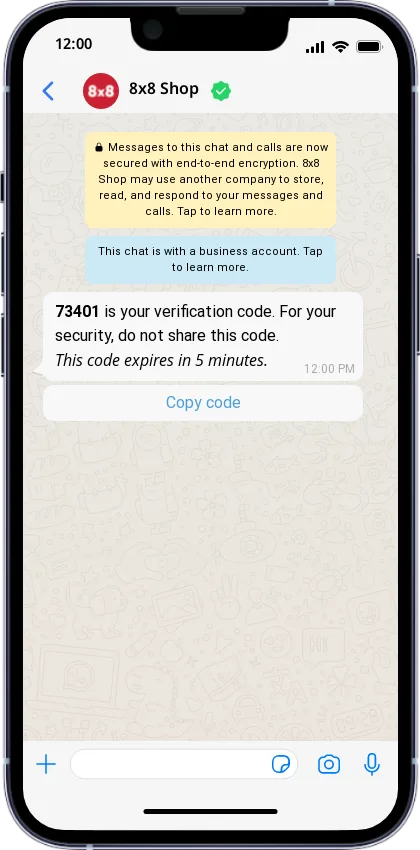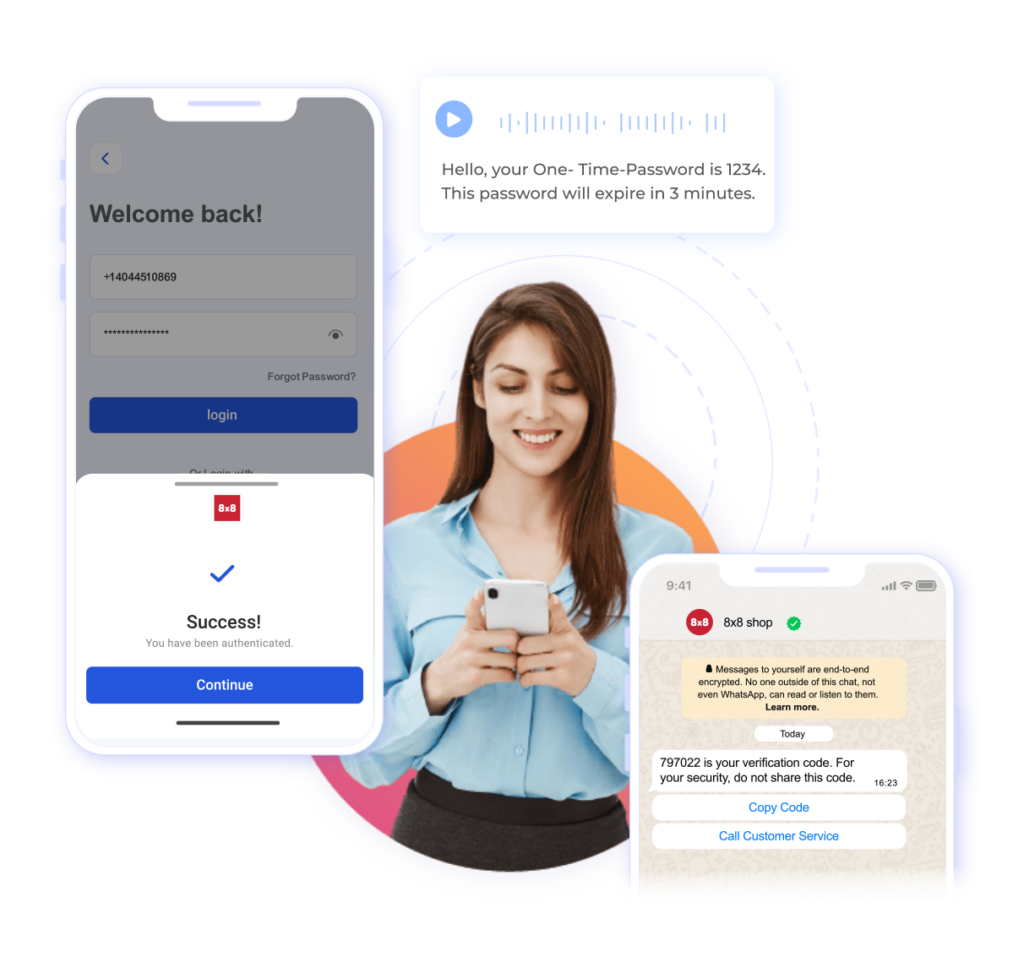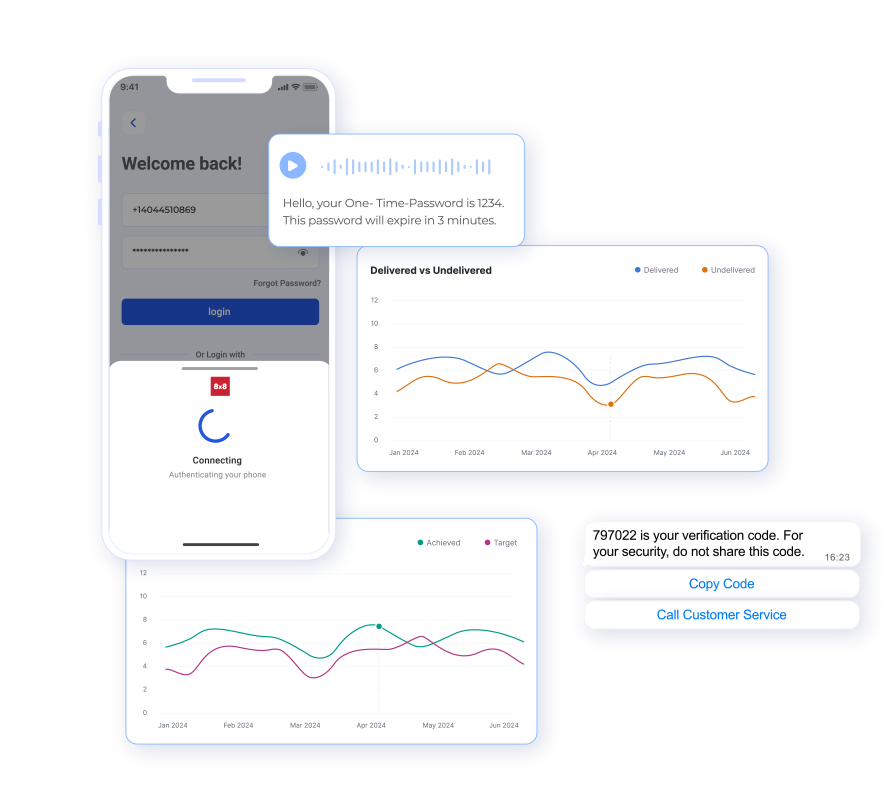In a world where cyber threats evolve daily, securing user accounts and transactions is non-negotiable. OTP (One-Time Password) authentication stands as a frontline defense, but not all OTP delivery methods are created equal. Businesses must strike the right balance between security, cost, and user experience—or risk leaving their systems vulnerable.
SMS, WhatsApp, and Viber OTP each come with their own strengths and limitations. SMS is ubiquitous but costly, WhatsApp offers encryption but requires an active account, and Viber brings global reach but isn’t as widespread. Choosing the wrong channel can lead to failed authentications, frustrated users, and unnecessary expenses.
This article deep dives into SMS, WhatsApp, and Viber OTP authentication, weighing their security levels, cost-effectiveness, and best use cases. Plus, we’ll explore why a multi-channel OTP strategy could be the smartest move—keeping businesses ahead of cyber threats while maximizing security and user convenience without breaking the bank.
How OTP Authentication Works
OTPs serve as an extra layer of security in Two-Factor Authentication (2FA), requiring users to enter a unique, time-sensitive code received via SMS, WhatsApp, or Viber. This method significantly reduces the risk of unauthorized access to accounts, as even if a password is compromised, an attacker would still need the OTP to gain entry.
Role of OTPs in Security
- Prevention of Unauthorized Access – OTPs ensure that only authorized users can access accounts or complete transactions.
- Temporary Validity – OTPs are time-sensitive and expire after a short duration, reducing the risk of misuse.
- Dynamic Authentication – Unlike static passwords, OTPs change with every login attempt, making them highly secure.
How Businesses Use OTPs to Strengthen Security & Trust
Businesses across various industries use OTP authentication for:
- Account Login and Recovery – Preventing unauthorized access and assisting users in resetting passwords securely.
- Transaction Verification – Ensuring the authenticity of financial transactions and reducing fraud.
- User Registration and Onboarding – Confirming new user identities and preventing spam or fake accounts.
- Compliance with Security Regulations – Meeting industry standards for data security and privacy.
The Reliable Classic with Hidden Costs & Risks

SMS OTPs remain a cornerstone in authentication strategies, widely adopted due to their simplicity and universal accessibility. Key statistics highlighting their prevalence include:
- Global Enterprise Adoption: A striking 93% of organizations worldwide utilize SMS OTPs for various verification processes. Notably, in the UK, this adoption rate reaches a full 100%, underscoring SMS OTP’s dominance in authentication practices.
Pros:
- Universal Reach – Works on all mobile devices without requiring an internet connection or additional apps.
- Ease of Implementation – Most businesses can integrate SMS OTP with minimal technical effort.
- Reliable for Feature Phones – Ideal for markets where smartphones and internet access are limited.
Cons:
- Security Risks – Mobile-based authentication methods, such as SMS-based OTPs, are susceptible to various threats, including SIM swapping, where attackers fraudulently transfer a victim’s phone number to a new SIM card to gain access to accounts; phishing, where users are tricked into revealing OTPs through deceptive messages or websites; and interception, where hackers exploit network vulnerabilities to eavesdrop on SMS communications, potentially compromising sensitive information.
- Costly for Large-Scale Use – Per-message charges can be high, especially for international users.
- Delivery Issues – Potential delays due to carrier restrictions or network congestion.
WhatsApp OTP: A Secure, Fast, and User-Friendly Alternative

WhatsApp has evolved into one of the world’s most popular messaging platforms, offering a range of features that prioritize security and user engagement.
Key Features and Security Measures:
- End-to-End Encryption: All messages, calls, photos, and videos transmitted via WhatsApp are secured with end-to-end encryption, ensuring that only the communicating users can read or listen to them. This robust encryption protocol prevents third parties, including WhatsApp itself, from accessing the content.
- Two-Step Verification: Users can enable two-step verification, adding an extra layer of security by requiring a PIN in addition to the standard authentication methods.
- App Lock: WhatsApp offers an in-app lock feature, allowing users to secure their chats with biometric authentication or a passcode, thereby preventing unauthorized access.
- Spam Protection: To combat spam and potential threats, WhatsApp has implemented features that block high volumes of messages from unknown numbers, protecting users from large-scale spam campaigns.
Pros:
- End-to-End Encryption – Provides better security compared to SMS, reducing interception risks.
- Higher Open Rates – WhatsApp messages have significantly higher read and response rates.
- Faster Delivery – Messages are typically delivered within seconds, reducing wait times for users.
- Rich Media Support – Businesses can send branded OTP messages with logos and additional instructions.
Cons:
- Requires Internet Access – Users need an active internet connection to receive OTPs.
- User Dependency – Users must have WhatsApp installed and linked to their phone number.
- Limited Reach – Not all customers use WhatsApp, restricting its effectiveness in certain markets.
Viber OTP: A Cost-Effective, Secure Option for Select Markets

Viber, established in 2010 and acquired by Rakuten in 2014, is a cross-platform Voice over IP (VoIP) and instant messaging application that enables users to send text messages, make voice and video calls, and share multimedia content. Recognized for its robust security features, Viber offers end-to-end encryption for private and group chats, ensuring that only the intended recipients can access the content. Additionally, Viber has introduced “Verification Messages,” allowing businesses to authenticate users through one-time passwords (OTPs) securely.
Usage Statistics:
- Global Reach: Viber has experienced significant global growth, with over 1.4 billion downloads worldwide and more than 250 million monthly active users.
- Philippines: In the Philippines, Viber has achieved a user penetration rate of 71%, making it one of the most widely used messaging apps in the country.
- Transactional Messaging Growth: Viber has seen a 506% year-on-year increase in transactional messages, indicating a growing preference among businesses for using the platform to send order and account status updates.
Pros:
- Strong Security Features – Messages are encrypted, enhancing security against cyber threats.
- Cost-Effective Alternative – Generally cheaper than SMS for businesses targeting Viber users.
- Viber Verification Messages (OTP) – A secure messaging solution that enables businesses to send one-time passwords (OTPs) directly to users through Viber.
Cons:
- Requires Internet Connection – Like WhatsApp, Viber OTPs depend on an active internet connection.
- Limited User Base – Best suited for businesses targeting regions where Viber is popular.
- Not as Universally Supported – Users must have Viber installed to receive OTPs.
SMS, WhatsApp, and Viber OTP: Key Comparisons
Security
- SMS OTP – Moderate security, vulnerable to SIM swapping and interception.
- WhatsApp OTP – High security due to end-to-end encryption.
- Viber OTP – High security with additional verification features.
Cost
- SMS OTP – High costs, especially for international messages.
- WhatsApp OTP – Lower costs than SMS, with better engagement.
- Viber OTP – Generally the most cost-effective option for regions with high Viber usage.
Delivery Speed
- SMS OTP – Delivery may vary depending on network conditions.
- WhatsApp OTP – Faster delivery due to internet-based messaging.
- Viber OTP – Similar to WhatsApp, with reliable delivery where Viber is widely used.
User Experience & Branding
- SMS OTP – Branded sender ID can help businesses customize the sender name (e.g., “YourBank” instead of an unknown number), increasing trust and reducing phishing risks.
- WhatsApp OTP – Interactive messages with branding and multimedia support.
- Viber OTP – Verified sender name and logo to enhance trust and security.
Which OTP Solution Should Businesses Choose?
When selecting an OTP delivery method, businesses should consider the following factors:
- Security Needs – If encryption is a priority, WhatsApp and Viber OTPs offer stronger protection.
- Cost Efficiency – Businesses looking to reduce costs may find WhatsApp and Viber OTPs more economical than SMS.
- Audience Reach – SMS remains the most universal method, while WhatsApp and Viber depend on user adoption.
- Branding & Trust – Businesses that prioritize branding and phishing protection should consider Viber OTP with its verified sender feature.
Why Multi-Channel OTP is the Best Approach
A multi-channel OTP strategy enhances reliability, security, cost-efficiency, and user experience by dynamically selecting the best delivery method. If one channel fails (e.g., SMS delay), another (e.g., WhatsApp, Viber) ensures seamless authentication without disrupting the user journey.
Key Benefits:
- Improved Reliability – Ensures OTP delivery through alternative channels if one fails due to network issues or carrier restrictions.
- Stronger Security – Reduces reliance on SMS, which is vulnerable to SIM swapping, phishing, and interception. Encrypted channels like WhatsApp and Viber offer added protection.
- Optimized Costs – Dynamically routes OTPs through the most cost-effective channel based on user availability, reducing SMS expenses for international authentication.
- Better User Experience – Offers users their preferred communication channel, reducing frustration and login friction. Users receive OTPs faster on apps they already use, leading to higher engagement and conversion rates.
- Seamless Authentication – Reduces drop-offs caused by failed OTP deliveries or slow response times, keeping the authentication process quick and hassle-free.
- Scalability for Global Audiences – Accommodates users across regions with varying mobile and internet accessibility, ensuring a smooth authentication experience regardless of location.
By implementing a multi-channel OTP strategy, businesses can provide secure, seamless, and user-friendly authentication—minimizing risk while maximizing customer trust and satisfaction.
Enhancing Security Beyond Spam Protection with 8×8’s Verification API

While WhatsApp’s built-in security features help reduce spam and unwanted messages, businesses often require an additional layer of protection to verify users and prevent unauthorized access. This is where 8×8’s Verification API comes in.
Designed to provide seamless and scalable authentication, the Verification API enables businesses to verify users through secure OTPs. Whether it’s for account sign-ups, transactions, or password resets, this API helps ensure that only legitimate users gain access—minimizing fraud risks and improving the user experience.
Key features include:
- Omnichannel Delivery – Seamlessly deliver OTPs through SMS, voice, messaging apps like Viber and WhatsApp, or Silent Mobile Authentication.
- Reliable Delivability – Guarantee OTPs reach users with high conversion rates even when standard methods fail, thanks to premium routes and automatic fallback to voice messages.
- Robust Fraud Prevention – Guard against SMS fraud with real-time traffic monitoring and number intelligence.
- Out-of-the-Box Localization – Effortlessly engage users with a variety of pre-built message templates, available in 43 languages, for a truly global reach.
- Analytics & Reporting – Track authentication metrics in real-time to maintain system security.
The 8×8 Verification API streamlines the authentication process by handling Sender ID management, OTP generation and validation, automated fallback, channel orchestration, and fraud monitoring – all from one centralized platform.
Verif8: Simplifying User Verification with a Streamlined API-as-a-Service Solution

For businesses looking for a more efficient and hassle-free way to implement user authentication, Verif8 by 8×8 offers a self-service, OTP-as-a-service solution. Built on the foundation of the 8×8 Verification API, Verif8 eliminates the need for expensive infrastructure and technical expertise, offering a cost-effective solution with premium routes and automatic fallback to voice messages.
Key Benefits of Verif8:
- Seamless integration & Scalability – Self-service onboarding and seamless integration that enable multi-country onboarding, scaling effortlessly with business needs.
- Omnichannel Verification – Ensures OTPs are delivered through the most effective channel, including SMS, voice, and Viber.
- Convenience & Speed – Pre-built templates in 43 languages and pre-approved Sender IDs enable same-day OTP deployment.
- Also encompasses all the features of Verification API, including fraud prevention, analytics, localization and more.
With Verif8, businesses can enhance their onboarding, login security, and transaction verification without the need for complex integrations—making secure authentication more accessible than ever.
Final Verdict: The Best OTP Strategy for Your Business
OTP authentication remains a cornerstone of digital security, and choosing the right delivery method is crucial for businesses aiming to protect their users. While SMS offers universal reach, WhatsApp and Viber provide enhanced security and cost-effectiveness. The best approach? A multi-channel OTP strategy that optimizes OTP delivery based on user preferences and network reliability.
By implementing 8×8’s Verification API or Verif8 solution, businesses can ensure seamless OTP authentication, enhance security, and build trust with their customers in an increasingly digital world. Reach out to an expert at cpaas-sales@8×8.com to find out more.




